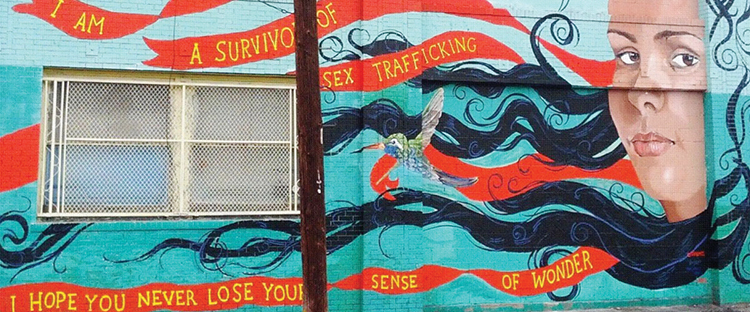By Sue Pascoe
Editor
Journey Out Development Manager Cherise Charleswell painted a bleak picture of the sex trafficking occurring in Los Angeles—and even in Pacific Palisades—when she spoke to the Pacific Palisades Rotary Club in late February on “Child Sex Trafficking Beyond the Numbers: The Local Tragedy No One Sees.”
“Most people don’t think about this as a problem in our country,” said Charleswell, who says the average age of entrance into prostitution is 12-14 years old.
More and more children (even from wealthy neighborhoods) are lured by “lies, promises of love and economic gain” by pimps who target through the internet, at malls and at schools.

Charleswell, who is the immediate past president of the Southern California Public Health Association, said that children whose family is in crisis or those in foster care or those who are homeless are easily targeted by pimps.
Once the child is in the pimp’s hands, the child is beaten and drugged into submission. A pimp can make between $150,000 to $200,000 a year on just one child—which means the child is raped on average 7,000 times a year.
“Once a child is in the sex trade, they have about a seven-year life span,” Charleswell said. “About 5,000 teenagers a year are buried in unmarked graves.”
Then she dropped a bombshell that a house in the Palisades had been busted for prostitution and there were children, being used.
According to a January 2016 Public Safety Report, “More Gangs Are Running Sex Trafficking Rings” in San Diego County, “a recent three-year study found that street gangs are increasingly operating sex trafficking rings. The study found that at least 110 gangs were involved in sex exploitation and 85 percent of pimps or sex traffickers were gang members.
“Gangs are turning to sex trafficking because it’s highly profitable and—unlike dealing narcotics or firearms—it requires little to no financial investment. Sex trafficking is also a renewable resource: Women can be sold over and over again. Also, running a profitable sex trafficking ring requires fewer people than drug rings and it is less risky; if a girl gets caught and imprisoned, she is easily replaced.”
Charleswell spoke about “Anne,” who was in a master’s program at a university. Naïve and sheltered growing up, Anne found a boyfriend, who romanced her, and then forced her to have sex with others, using threats and violence.
Once Anne escaped, she came to Journey Out (formerly the Mary Magdalene Project), which has helped her with therapy and dealing with the effects of her experience.
Charleswell said that victims are manipulated into believing they are worthless, de- serve no better and have no other options. “Once they are in, it is extremely difficult to get out,” she said.
There are major obstacles to ending the victimization of children, she said, noting that pornography is used to desensitize people. “It is a big business and people in the porn industry have a large lobby in Sacramento,” Charleswell said. “They are fighting any additional laws.
“We need laws that give longer prison terms to pimps and johns,” she said, and argued against legalizing prostitution.“ It would make it more difficult for police to go into a house to see if there are underaged girls.”
Journey Out will provide speakers to educate the public about issues of sex trafficking and commercial sexual exploitation. “Complacency is also an issue,” Charleswell said.
For more information, visit journeyout.org.










You must be logged in to post a comment.